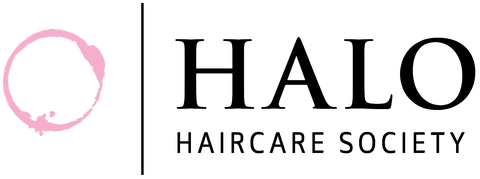Low-Level Light Therapy (LLLT) for Scalp Health and Hair Loss
Low-Level Light Therapy (LLLT) is a powerful, non-invasive approach to treating various scalp conditions and types of hair loss. By using targeted wavelengths of light, LLLT stimulates cellular activity, increases blood flow, and promotes a healthier environment for hair follicles. Here, we’ll dive into how LLLT works, the benefits of different wavelengths—including blue, red, and near-infrared light—compare LED and laser devices, and outline effective LLLT routines for a range of scalp concerns.
How LLLT Works for the Scalp
LLLT operates through photo biomodulation, where light energy penetrates the scalp to energize cells and boost mitochondrial activity. The increased ATP (adenosine triphosphate) production fuels cellular processes, resulting in improved blood circulation, inflammation reduction, and hair follicle stimulation. Together, these effects encourage hair growth and support overall scalp health, particularly when using the correct combination of wavelengths.
Wavelengths Explained: Blue, Red, and Near-Infrared Light
Different wavelengths of light each play a unique role in addressing scalp concerns:
-
Blue Light (470 nm): Targets the scalp surface, helping reduce bacteria, manage dandruff, and balance oil production. Blue light is also ideal for controlling inflammation and creating a healthy scalp environment that promotes hair growth.
-
Red Light (660 nm): Reaches the upper dermis, stimulating hair follicles, boosting blood flow, and enhancing cellular activity. Red light is effective in treating hair thinning by activating dormant follicles and improving scalp health.
-
Near-Infrared Light (850 nm): Penetrates deeper scalp tissues, reducing inflammation in the lower dermis and subcutaneous tissue. Near-infrared light is particularly helpful for more severe or chronic scalp issues, as it targets inflammation at the root and supports deeper healing processes.
Each wavelength provides distinct benefits, and when combined, they offer a comprehensive solution for scalp and hair health.
LED vs. Laser: Which Is Right for You?
LED and Laser devices are the two main types of LLLT options, each with unique strengths:
- Laser: Emits a coherent, focused beam of light that penetrates deeply, making it highly effective for targeting hair follicles and deeper tissue. Best for addressing severe hair loss and inflammatory conditions.
- LED: Uses non-coherent light that disperses widely across the scalp, ideal for treating surface-level concerns like dandruff, mild hair thinning, and scalp irritation. LED is gentle, making it suitable for regular use and for those with sensitive skin.
Which Device to Choose?
- For Advanced Hair Loss and Deep Scalp Conditions: A laser device’s focused penetration will provide more noticeable results for serious concerns.
- For Mild-to-Moderate Thinning and Surface Scalp Issues: LED is often sufficient, offering broad coverage and gentle treatment for milder issues.
- For Maintenance or Sensitive Scalps: LED provides a low-intensity option that can be used regularly without causing irritation.
Types of Hair Loss and Scalp Conditions LLLT Can Address
LLLT is effective across a range of scalp concerns and hair loss types. Here’s a breakdown of common conditions and whether LED is likely to be sufficient:
1. Androgenetic Alopecia (Genetic Hair Loss)
- Overview: Gradual thinning and receding hairline.
- Recommended Treatment: Red light for follicle stimulation; laser is often preferred, but LED can help slow progression.
2. Telogen Effluvium (Stress-Related Shedding)
- Overview: Temporary hair loss from stress or illness, causing widespread thinning.
- Recommended Treatment: LED red light, as it can improve blood flow and encourage follicles to return to a normal cycle.
3. Alopecia Areata (Autoimmune Hair Loss)
- Overview: Patchy hair loss from immune attacks on follicles.
- Recommended Treatment: LED can offer some inflammation relief, but laser and near-infrared light may provide deeper follicle support for severe cases.
4. Scalp Psoriasis
- Overview: Red, scaly patches due to inflammation.
- Recommended Treatment: Near-infrared and blue light can help manage inflammation and reduce surface irritation; laser is beneficial for more persistent cases.
5. Seborrheic Dermatitis (Dandruff)
- Overview: Flaky, itchy scalp with oily patches.
- Recommended Treatment: Blue light for surface bacteria control and balancing oil; red light also aids mild-to-moderate cases.
6. Dandruff
- Overview: Mild, flaky scalp condition.
- Recommended Treatment: Blue light is often effective for reducing dandruff-causing bacteria and promoting a balanced scalp environment.
7. Traction Alopecia
- Overview: Hair loss from stress on the hair shaft due to tight hairstyles.
- Recommended Treatment: LED with red light can support follicle recovery in early stages, but deeper stimulation (near-infrared or laser) is helpful for more severe cases.
8. Nutritional Deficiency-Related Hair Loss
- Overview: Thinning due to lack of nutrients.
- Recommended Treatment: LED red light can help by boosting circulation and delivering nutrients more effectively, but correcting the deficiency is essential for lasting results.
LLLT Routine for Scalp Health
Creating an effective LLLT routine tailored to your scalp concerns ensures you get the most from your device. Here’s a general guide on how to incorporate each wavelength:
-
Blue Light: Use 2-3 times per week to target scalp bacteria, reduce dandruff, and balance oil production. Apply on a clean scalp to enhance light penetration and maximize antibacterial benefits.
-
Red Light: Use 3-4 times per week for follicle stimulation and improved blood flow, especially beneficial for genetic hair loss or thinning. Red light should be applied consistently over 8-12 weeks for visible results.
-
Near-Infrared Light: Ideal for chronic inflammation or deeper tissue concerns, 2-3 times per week. This wavelength penetrates deeply, making it best for inflammatory conditions like psoriasis and advanced hair loss.
Timing and Product Application Tips
- Use LLLT on a Clean Scalp: Oil and buildup can obstruct light, so apply LLLT after washing for optimal penetration.
- Apply Products Post-Treatment: Leave-in treatments, oils, or serums work best when applied after LLLT to maximize absorption and avoid blocking light.
Our LLLT Cap: A Powerful, Multi-Wavelength Solution
Our LLLT cap combines the power of 470 nm blue light, 660 nm red light, and 850 nm near-infrared light to address scalp concerns from all angles:
- Comprehensive Wavelengths: Blue light controls bacteria and balances oil, red light stimulates follicles, and near-infrared reaches deep tissue layers to reduce inflammation.
- Full Coverage: Equipped with 164 LEDs, our cap provides consistent treatment across the entire scalp.
- Time Control: Easily manage session lengths with time control features, allowing you to customize your treatment routine.
- Four Light Sources: Combining blue, red, and near-infrared light for targeted support across a wide range of scalp and hair conditions.
With its advanced design, our LLLT cap offers an effective, all-in-one solution for optimal scalp health and hair growth.




